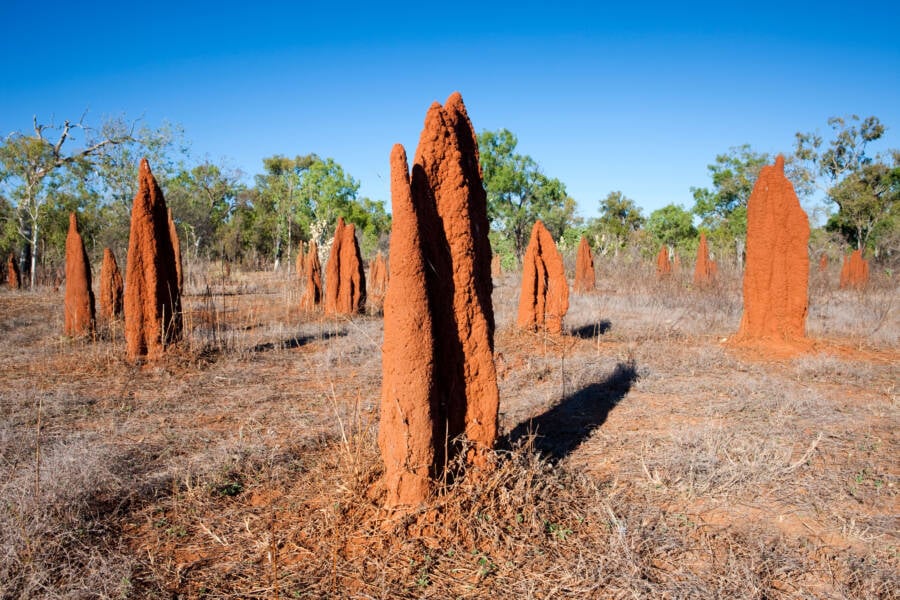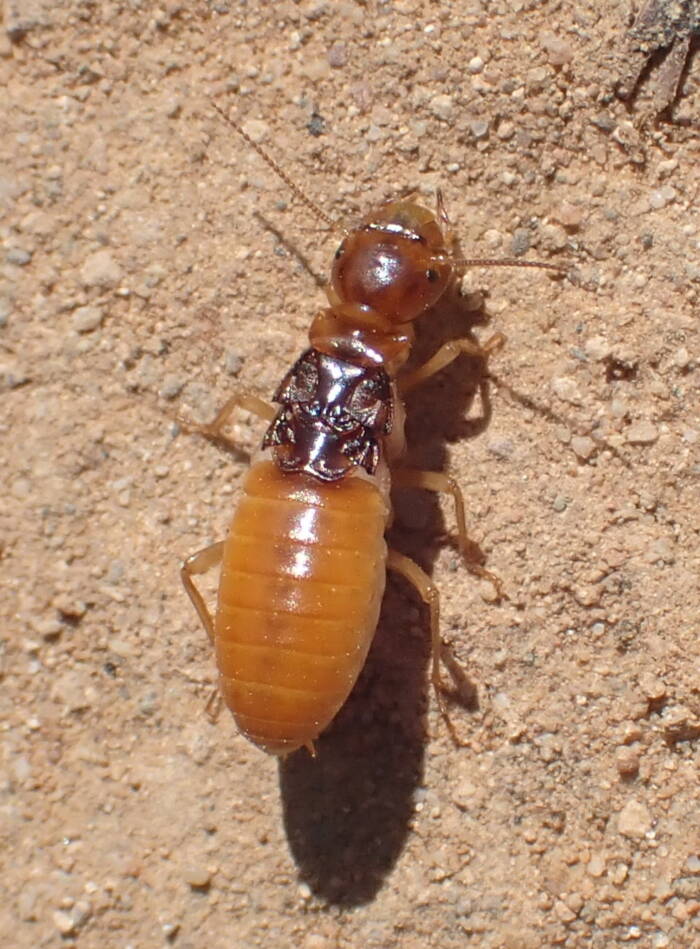Before this discovery in Namaqualand, South Africa, the oldest known termite mounds on Earth dated back just 4,000 years.

Francis et al./Science of the Total EnvironmentTermite mounds in Namaqualand, South Africa.
Recently, researchers working in Namaqualand in western South Africa discovered termite mounds dating back 34,000 years, making them the oldest in the world.
Alongside dating the termite mounds, scientists studied how their high carbon content affects their local environment. Interestingly, their research holds promise for future climate change studies.
Discovering The World’s Oldest Termite Mounds In South Africa
Scientists were recently studying the connection between termites and carbon deposits in Namaqualand, South Africa, when they stumbled upon the oldest active termite mounds ever recorded.
“Recent radiocarbon dating has revealed that these mounds are far older than any previously known, with some dating as far back as 34,000 years — that’s older than the iconic cave paintings in Europe and even older than the Last Glacial Maximum, when vast ice sheets covered much of the northern hemisphere,” Michele Francis, the lead study author and a professor at Stellenbosch University, said in a statement.
The previous record for the oldest termite mound was a 4,000-year-old mound in Brazil.

imageBROKER.com GmbH & Co. KG / Alamy Stock PhotoAn example of much younger termite mounds in the Australian Outback.
“To put it in perspective, these termite mounds were already ancient when woolly mammoths still roamed the Earth,” said Francis. “During the Last Glacial Maximum, around 20,000 years ago, massive ice sheets covered parts of North America, Europe, and Asia. These mounds were already thousands of years old by then, providing a living archive of environmental conditions that shaped our world.”
The impressive mounds, called heuweltjies (“little hills”) in Afrikaans, were found near the Buffels River in Namaqualand. This region is a hotbed for termites, and nearly 20 percent of the area is covered in the insects’ mounds. This makes it a key site for both the study of termite mounds and how they interact with their environment.
In fact, Francis believes research surrounding termite mounds may help develop future policies when it comes to slowing climate change.
How Termite Mounds May Help In The Fight Against Climate Change
Francis and her team originally set out to study the termite mounds in Namaqualand to collect information about how their high carbon content changes the surrounding environment.
Every day, termites collect wood and add it to their nests, which can grow more than six feet tall. As time passes, the wood eventually decays, creating a carbon-rich environment beneath the ground.
“The heuweltjies have shown that during their formation, the region experienced significantly more rainfall than today. This wetter climate allowed for minerals such as calcite and gypsum to dissolve and move down to the groundwater. This process is crucial in understanding natural carbon sequestration processes,” Francis stated.

Nicola van Berkel/Wikimedia CommonsThe insects that made the ancient mounds are southern harvester termites (Microhodotermes viator).
According to the researchers’ study, published in the journal Science of the Total Environment, the termite mounds sequester carbon dioxide as part of the termites’ harvesting activities.
When a termite brings new material into the mound, it forces older material closer to the bottom, where its carbon content is better preserved. Because these nests disturb the soil, rainwater seeps into the mounds, and microbes in the soil convert the carbon into calcium carbonate. This calcium carbonate interacts with carbonic acid during heavy rains to create carbon dioxide, which is then stored underground.
This strange carbon storage model is something researchers have been interested in for a while.
“By studying these mounds, scientists can gain a better understanding of how to combat climate change, utilizing nature’s own processes for carbon sequestration,” said Francis. “They also highlight the importance of preserving our natural world, as these tiny engineers have been shaping our environment for tens of thousands of years.”
After reading about the world’s oldest termite mounds, dive into the terrifying story of cordyceps, the fungus that turns insects into zombies. Then, read about the bullet ant, the creature with the world’s most painful sting.





